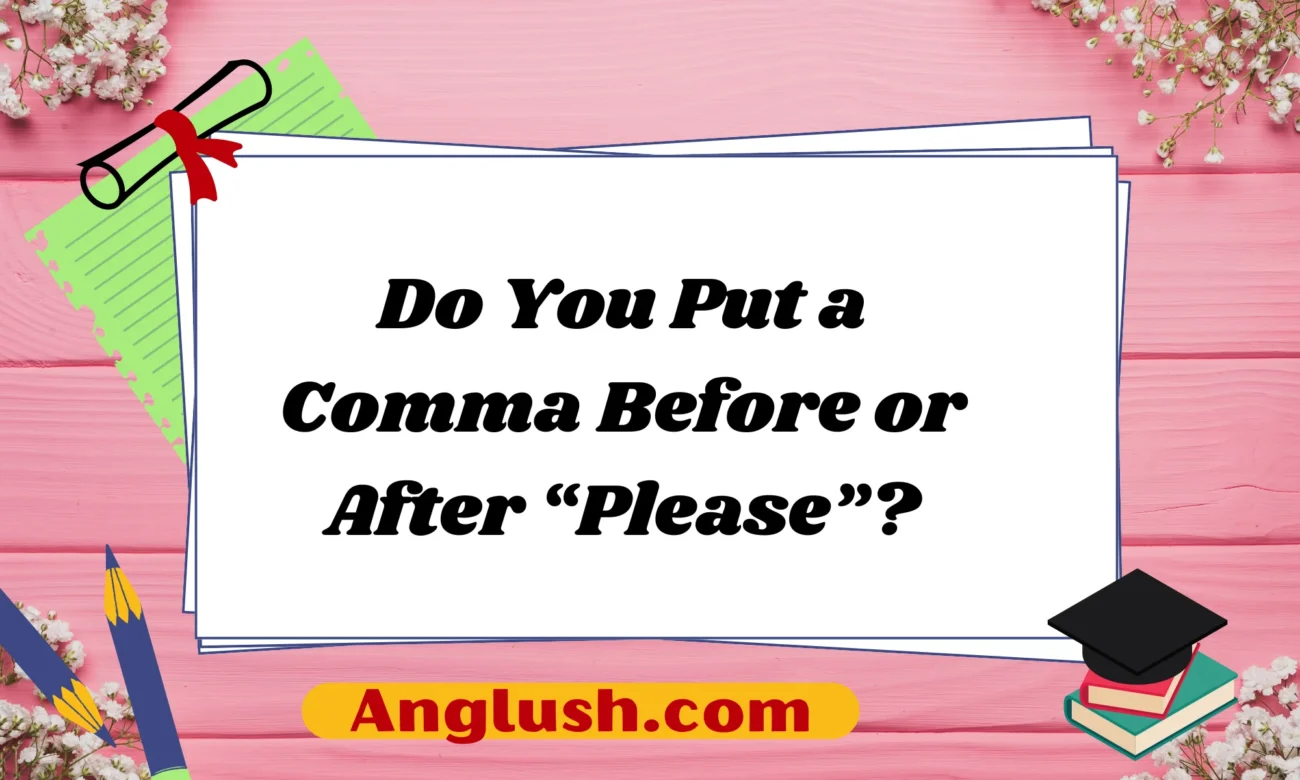Introduction
Politeness is an essential part of communication, and the word “please” plays a crucial role in making requests sound courteous. However, many people struggle with proper comma placement when using “please” in sentences. Should you place a comma before or after “please”? The answer depends on sentence structure, tone, and formality.
In this article, we will explore the rules for using commas with “please,” examine different sentence structures, and provide practical examples. We will also offer alternative ways to phrase polite requests in both formal and informal contexts. By the end, you’ll have a clear understanding of how to use “please” correctly and effectively.
Understanding Comma Placement with “Please”
1. “Please” at the Beginning of a Sentence
When “please” appears at the start of a sentence, it is typically followed by a comma. This is because “please” acts as an introductory word that sets the tone of the sentence.
Example:
✔️ Please, send me the report by tomorrow.
✔️ Please, let me know if you have any questions.
In these cases, the comma after “please” creates a slight pause, reinforcing the polite tone of the request.
When to Skip the Comma:
In more casual speech or writing, the comma is often omitted. While this is not grammatically incorrect, including the comma helps with clarity and formality.
✔️ Please send me the report by tomorrow. (Acceptable in informal writing)
2. “Please” at the End of a Sentence
When “please” appears at the end of a sentence, a comma is usually placed before it to indicate a polite request.
Example:
✔️ Pass the salt, please.
✔️ Can you help me, please?
Here, the comma separates “please” from the rest of the sentence, making it clear that it is an added polite request rather than a direct part of the main clause.
When to Skip the Comma:
In casual or conversational writing, you might see “please” at the end of a sentence without a comma. While this is common in texting or informal communication, a comma is generally preferred in formal writing.
✔️ Can you help me please? (Informal)
3. “Please” in the Middle of a Sentence
When “please” appears in the middle of a sentence, comma placement depends on whether it is interrupting the flow or naturally fitting into the structure.
✔️ Could you, please, send me the details? (Commas emphasize politeness)
✔️ Could you please send me the details? (More natural in everyday writing)
If “please” is essential to the request, omitting commas is acceptable. However, if it is used for added emphasis, commas can help clarify its role.
Alternative Ways to Express Politeness
Sometimes, using “please” repeatedly can feel repetitive or overly formal. Here are some polite alternatives based on different tones and levels of formality:
1. Formal Alternatives
If you are writing a professional email, making a request in a business setting, or speaking with someone you do not know well, consider these alternatives:
✔️ Would you be so kind as to…
✔️ I would appreciate it if you could…
✔️ May I kindly ask you to…
✔️ Would it be possible to…
✔️ If it’s not too much trouble, could you…
Example:
🚀 Instead of Please send me the documents by Friday, try I would appreciate it if you could send me the documents by Friday.
2. Polite Yet Friendly Alternatives
For everyday interactions that require a balance of politeness and warmth, try these phrases:
✔️ Could you do me a favor and…
✔️ Would you mind…
✔️ I’d love it if you could…
✔️ Whenever you get a chance, could you…
Example:
⭐ Instead of Please let me know your availability, try Whenever you get a chance, could you let me know your availability?
3. Casual and Friendly Alternatives
If you’re texting a friend or speaking in an informal setting, “please” can sometimes feel unnecessary. Instead, try these softer approaches:
✔️ Hey, can you…
✔️ Mind helping me out with…
✔️ Any chance you could…
✔️ I’d really appreciate it if you…
✔️ Do me a quick favor and…
Example:
📱 Instead of Please call me when you’re free, try Hey, can you call me when you’re free?
10 Texting Examples Using “Please” Correctly
Here are some easy-to-follow examples optimized for readability:
- Hey, can you send me the notes, please?
- Please, don’t forget to pick up the groceries.
- Let me know if you’re available, please.
- Could you, please, be on time for the meeting?
- Can you help me out with this, please?
- Please check your email when you get a chance.
- Whenever you have time, could you, please, reply?
- Would you be able to review this for me, please?
- If possible, please update me by tomorrow.
- Please don’t hesitate to reach out if you need anything.
Conclusion
The placement of a comma before or after “please” depends on its position within a sentence and the level of formality required. In formal writing, using commas correctly enhances clarity and politeness. However, in casual writing, commas are often omitted without causing confusion.
Additionally, if you find yourself overusing “please,” consider alternative ways to phrase your request while maintaining a polite and natural tone. Understanding these nuances will help you communicate more effectively, whether you’re writing an email, sending a text, or speaking in person.

